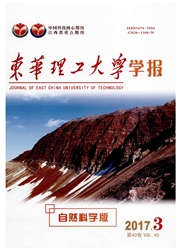

 中文摘要:
中文摘要:
黄土高原中部连续的风尘堆积黄土红粘土序列,蕴含着东亚季风演化与高原隆升等重要的古气候与构造信息。结合已有的古地磁年代,根据磁化率的变化特征对黄土高原中部朝那黄土红粘土剖面记录的古环境变化进行了划分,共划分Ⅰ(8.1~5.6MaBP)东亚季风的初显期、Ⅱ(5.6~4.8MaBP)东亚夏季风开始增强期、Ⅲ(4.8~2.8MaBP)青藏高原隆升和东亚季风波动增强期、Ⅳ(2.8~2.6MaBP)气候转型期、Ⅴ(2.6~1.2MaBP)弱季风期、Ⅵ(1.2~0.62MaBP)季风增强期和Ⅶ(〈0.62MaBP)季风鼎盛期等7个阶段。并将其与全球冰量、太阳辐射进行对比,初步讨论各阶段演化的可能机制。
 英文摘要:
英文摘要:
The continuous eolian deposits of loess-red clay sequence in the central Loess Plateau contains the climatic and tectonic information about the evolution of the East Asian Monsoon and the uplift of the Qinghai-Tibet plateau.Based on the magnetic susceptibility curves,the paleoenvironmental stages of the Chaona loess-red clay section combining with the existing paleomagnetic age are divided.There are seven stages divided,as follows:I(8.1-5.6 MaBP) the period of East Asian Monsoon beginning to appear;II(5.6-4.8 MaBP) the period of East Asian Monsoon beginning to strengthen;III(4.8-2.8 MaBP)the period of the uplift of the Qinghai-Tibet Plateau and the reinforcement of the East Asian Monsoon;IV(2.8-2.6 MaBP)the period of climatic transition、V(2.6-1.2 MaBP) the period of the weak East Asian Monsoon;VI(1.2-0.62 MaBP)the period of the enhancement of the East Asian Monsoon;Ⅶ(0.62 MaBP) the period of the peak of East Asian Monsoon.Compared them with the global ice volume and the insolation and the possible mechanisms of evolution of the various stages are discussed.
 同期刊论文项目
同期刊论文项目
 同项目期刊论文
同项目期刊论文
 期刊信息
期刊信息
